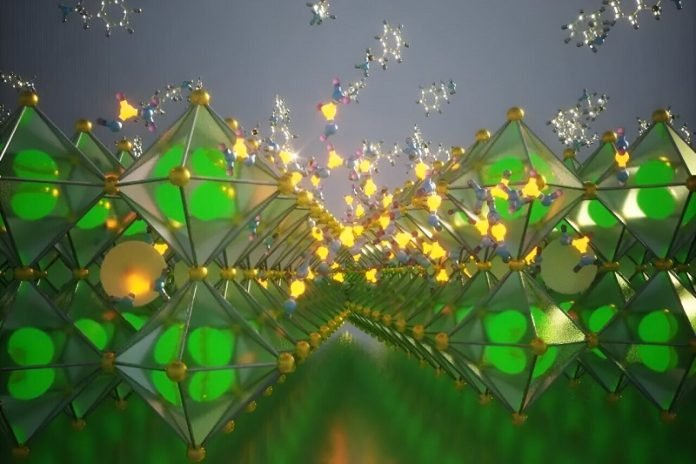
In a significant leap for solar energy, researchers at Georgia Tech have found a way to stop a key material in solar cells from breaking down.
This discovery could lead to longer-lasting, more efficient solar panels.
The material in question is called metal halide perovskite. It’s already as good as the best silicon-based solar cells in turning light into electricity.
But there’s been a big issue: perovskites don’t last long because they break down when they come into contact with water and oxygen.
This instability has been a major hurdle in using them for solar power.
The Georgia Tech team, led by assistant professor Juan-Pablo Correa-Baena, dug deep into this problem.
They used special tools like X-ray scattering and spectroscopy to see how perovskites react with water and oxygen.
What they found was a game-changer: it’s the combination of both water and oxygen that causes the problem. If you can keep either water or oxygen away from perovskites, they don’t degrade as fast.
Based on this understanding, the researchers tried a new approach. They coated the perovskite with a thin layer of molecules called phenethylammonium iodide (PEAI).
These molecules are like a shield against water. With this coating, the perovskite’s structure stayed stable, and it kept its ability to convert solar energy efficiently.
However, there’s still a challenge. PEAI isn’t perfect because it doesn’t handle heat well. When solar cells get hot in the sun, the PEAI molecules start moving around, and the efficiency drops. So, the team is now working on finding a solution to this new problem.
To tackle the heat issue, Correa-Baena is collaborating with another expert at Georgia Tech, chemist and materials scientist Antonio Facchetti. They’re on a mission to create new molecules that can both repel water and stay stable in high temperatures.
This research is part of a bigger goal. Georgia Tech wants to help make Georgia a key player in solar energy technology. They’re not just working on groundbreaking technology in the lab. They’re also thinking about how to bring this technology to the industry.
Companies across the U.S. are already showing interest in commercializing these discoveries. Georgia Tech’s work could pave the way for Georgia to become a big name in solar manufacturing, especially with perovskites.
In summary, the work being done at Georgia Tech could revolutionize how we use solar energy.
By solving the stability issues of perovskites, they’re opening doors to more efficient and longer-lasting solar cells. This is not just good news for solar energy users but also for the environment, as we move towards cleaner energy sources.



